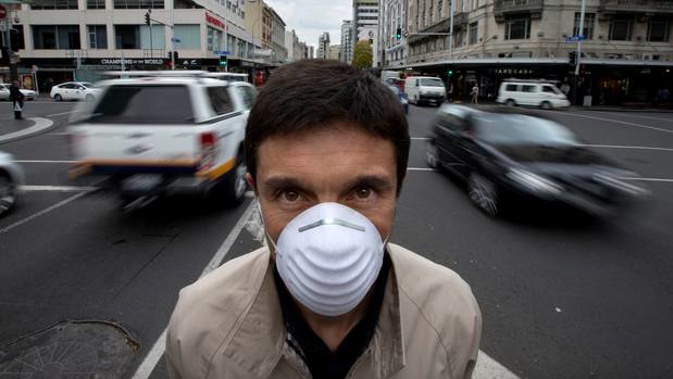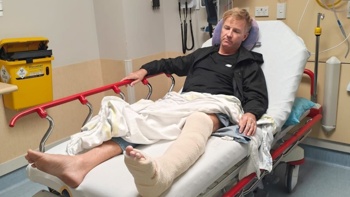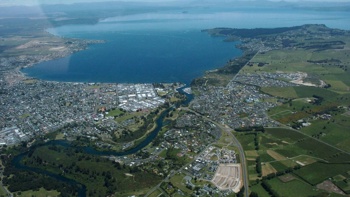
Pedestrians and workers in Auckland's Queen St are being exposed to high levels of "black carbon", or ultra-fine carbon particles associated with a number of health problems.
Research by Auckland Council has found that after a decade of falling air pollution levels across the city, the downward trend has reversed, with concentrations on Queen St now on the rise again.
In Queen St, the major source of the problem is higher diesel emissions from older buses, trucks, ferries and ships.
Black carbon emissions are more than three times higher than Canadian cities and twice as high for concentrations in major European, UK and American cities, according to an article published by Auckland Council's research and evaluation unit.
The research also found high levels of nitrogen dioxide pollution in Queen St, with peak concentrations close to Customs St.
Last night, the Auckland Public Health Service could not comment on the health risks of black carbon, saying the Medical Officer responsible for air quality would read the report before commenting.
Black carbon, also known as soot, consists of very small ultra-fine carbon particles not much larger than viruses. These can travel deep into lung tissue, into the bloodstream and become deposited in the heart or brain tissue. They are associated with health problems, including respiratory and heart disease, cancer, and even birth defects.
The article said high buildings in Queen St reduce airflow and allow air pollutant concentrations to increase close to ground level. High numbers of diesel buses in the central city and emissions from the port and ferry terminal contributed to air pollution levels.
Queen St is one of the busiest streets in New Zealand, with more than 10 million pedestrians counted last year.
/arc-anglerfish-syd-prod-nzme.s3.amazonaws.com/public/IEZAVNZTMNHMLAQV5HMAMFQJGM.jpg)
Council air quality scientist Nick Talbot said black carbon has been recorded in Queen St since 2002.
While black carbon concentrations had decreased over the years, it was hard to establish long-term trends due to street configuration changes, he said.
"When compared to international cities of similar size, Queen St does show elevated levels," Talbot said.
An air quality scientists at GNS Science, Perry Davy, said black carbon was still being analysed in terms of its specific health risk.
"In terms of the specific health risk for Queen St, that is an unknown.
"Yes there is a health risk. What happens to an individual depends on their exposure. It depends on when they are there, how long they are there and what time of the day they are there and what else they do during the day," Perry said
There is growing evidence that black carbon is a problem in New Zealand, according to a Ministry for the Environment report on air quality, called Our Air 2018.
/arc-anglerfish-syd-prod-nzme.s3.amazonaws.com/public/HHTY52G3MBDMZH5RE7KJZ7GNYY.jpg)
Council planning committee chairman Chris Darby said once inhaled, black carbon could settle in the lungs and was very difficult to be emitted.
"Once it is in your system it is going to stay in your system and do damage over time. Some will come out but if you are exposed to it on a regular basis then it affects your health," he said.
Darby said the way to get rid of black carbon was to remove diesel from the central city by replacing diesel buses with electric buses, introducing modern electric trams and pedestrianising Queen St.
Auckland Transport is trialling two electric buses on the City Link service, including looking at their commercial viability, before introducing more.
Take your Radio, Podcasts and Music with you









